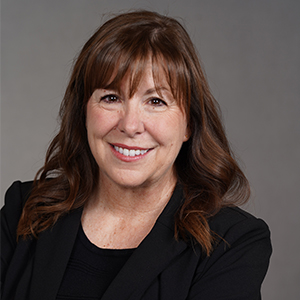HousingWire Editor in Chief Sarah Wheeler sat down with David Coleman, president of MISMO, to talk about what’s changed in technology over the last 15 years, and what still needs to change. This interview has been edited for length and clarity.
Sarah Wheeler: The cost to originate is still high when you consider all the tech being deployed. On the other hand, the tech itself costs money. Do you think technology should be doing more of the heavy lifting than it is?
David Coleman: I do. When I was a consultant helping a company pick a new loan origination platform, those kinds of things, nine times out of 10, the first thing they wanted to do was implement their process. We’ll buy the technology, but here’s how we do this — instead of buying the technology and looking at how it worked to understand what worked best. Was there anything truly unique about their process? Or was it kind of broken to begin with?
SW: You were at Fannie Mae and helped roll out Desktop Underwriter. When you look at the mortgage space now, did you think we’d be farther along than we are?
DC: Absolutely. We’re not even close to where I thought we’d be by now. And I think the biggest challenge as I talk to people — beyond some regulatory fear — is that they don’t have a single, you know, single path for mortgage. In order to implement, you have to be willing to bifurcate your production line, and say, here’s a straight through mortgage process and over here is everybody else.
SW: Are we still chasing the one technology to rule them all, that elusive end-to-end process, or is it more taking the best in class solutions and bolting them together?
DC: You can do it either way. A couple of big guys are building their own ecosystems and they’ve created a platform where you can pull in all the service providers. Others bolt things on. One company I recently talked to was already in the lending space. And so they worked with a technology provider to take that knowledge of being in the lending space and creating a front to back platform that they feel is really best in class, but they have bolted all the pieces. Now, instead of being the originator, they are going to sell their platform to originate for others.
When it comes to buy or build, if you have someone that regardless of the size of the company, if they lack technical acumen, they’re probably going to be buying or depending on somebody else to provide the services. Whereas, if they have technical acumen, they want to have certain control over their processes and their technology. So they’re probably going to lean towards controlling their platform. I don’t think anybody can build it all from scratch. It’s gotten way too complex. I think it has to do with the leader of the company, or if they attract a strong technology leader and they want to make sure that they’ve got control over the platform.
SW: What’s your view on AI?
DC: You would think that the industry thinks that AI popped into existence in November of 2022. Not true. But at the same time, they’re like thinking about how they can use it? Where’s the value? We held an AI Forum in September and we had a packed house — it was totally sold out and I think everybody walked out the room thinking they are starting to understand this space. And they want more!
SW: In some ways, AI can be a black box. How do lenders prove to regulators and other people what the AI did? Could be a whole new can of worms.
DC: It totally is and I think there are a couple of things that come into play there. One is kind of creating your own sandbox for your AI to run. In other words, don’t use chatGPT and let it run across the Internet and share your intellectual property and use God knows what for a source for learning. You have to have control over that source for learning.
The other thing is that you need to have a way to start figuring out how to monitor your AI. I talked to someone today about: are we too late for AI risk management? The contention is that we are not. But he said there’s a set of questions that you need to set up for your AI that have reliable responses, that based upon the response, you know that you’re still controlling it and it’s not controlling you.
SW: Standardization is now the name of the game. What does MISMO bring to the table?
DC: Since I’ve been on board, I have been very much advocating MISMO as a forum where the industry comes together to solve problems. And that could be a sharing of information, that could be looking at product features, that could be looking at documentation, or that could be looking at standards. What standards do is create an even playing field for the industry to communicate with one another.
There are certain companies, quite frankly, that don’t like that, because they fought for the advantage of having their own locked ecosystem where nobody else could come and play. But I will tell you that in conversations with executives all across the industry, they are seeing the value in standards because it gives them the opportunity to first, pick providers based upon their capabilities outside of their ability to integrate, and secondly, it allows them to integrate tightly with players who want to come on board.
And then I’ll flip it around on the service provider side. They like standardization, because then they can go talk to prospective customers about the business or the value they provide, and not the cost of integration because they have standardized transactions working already.
SW: What else is happening at MISMO?
DC: We’ve also been helping the industry understand the whole credit score space, around FHFA and the GSEs. So we held a Thursday transfer workshop with 3,580 attendees where we kicked off: what does the future look like? We’ve also been working closely with FHA, VA, Ginnie Mae USDA, because they’re looking at how do they roll out their homes by the standards adopted by the industry?
At the same time, we’re also putting very heavily on a mortgage eNote, eClose, with a remote online notary. We actually certified 30 remote online notaries, and some title companies will not use a remote online notary unless they’ve been certified by MISMO. State regulators are also starting to look at MISMO and join MISMO along with federal foreign banks. And we’ve got 39 workgroups lined up and we’re in the middle of it all.
SW: It’s a lot going on. When it comes to eClosing, what I hear most often is if there was a way to know at the beginning of the loan process that that loan was going to close digitally, it could go all the way through. What progress has been made to give that sort of certainty at the beginning of the process?
DC: We have an eligibility platform that we’ve developed with Snapdocs, where lenders can go in and see what type of closing is appropriate for the location they’re in, so it’s just providing that guidance up front. I found that oftentimes, the biggest challenge are the guys thinking, ‘We need to keep our best x options open, so don’t eClose it because not everybody takes it yet. But that’s changing very quickly, because they’re starting to realize there’s a lot of value in having an electronic mortgage and if their best x option doesn’t accept them, so what.
I spoke with one very large lender and they’re up to 80% eClose now and they’re pushing very hard on getting the eNotes built for all of those.
You’ve got the Federal Home Loan Banks now accepting eNotes. There’s one misconception out there that those eNotes have to be registered with MERS, or they cannot use them to pledge collateral for lending from a federal banks. So they’re asking us to help get the word out to their membership, that here are the steps you need to go through for making sure that they can be pledged as collateral.
SW: Do mortgage companies require a different kind of tech leader right now?
DC: One thing that I do believe wholeheartedly is that technology has reached a point where it should be reporting to the CEO. There are so many companies that hide their technology under the CFO or the COO or somewhere where they don’t get the recognition they need, especially on a publicly traded company where you should have board oversight and things along those lines. But it needs to be somebody that has the respect, has the knowledge, can run the area and can be a c-suite player that reports into the CEO.
Technology is so integral to business today. They need to understand the business and how they play into the profitability of the company. And that’s really where the shift is.
SW: What makes you optimistic when you look at the landscape for mortgage technology?
DC: I’m very optimistic and the reason is I see so many people continue to come into the industry with new ideas, new ways of doing business who will challenge the norms. A perfect example is consumer permission — verification. Who would have thought to 10 years ago, that I would be willing to give another company access to all my accounts, so that they could go get the data they need for the mortgage transaction? And it’s because people are getting used to that elsewhere and it makes their life so much easier.






